Cutting Downtime in Argentina: How Pallet Changing Machines Help
Are you constantly battling production stoppages in your plant? It feels like you fix one bottleneck only for another to appear, especially in the final stages of packaging and logistics. In Argentina's competitive industrial landscape, every minute of unplanned downtime is a direct hit to your bottom line, eroding profits and causing frustrating delays that ripple through your entire operation. What if a single piece of equipment, often overlooked, could solve a major source of these interruptions, streamline your workflow, and give you back valuable production time?
Pallet changing machines help cut downtime in Argentinian facilities by automating the transfer of goods from one pallet to another. This simple function eliminates the primary causes of logistics delays: slow manual handling, product damage from mishandling, and production halts due to incorrect or broken pallets. By creating a fast, reliable, and safe transition point, these machines ensure your production lines run continuously, unhindered by final-stage packaging issues.
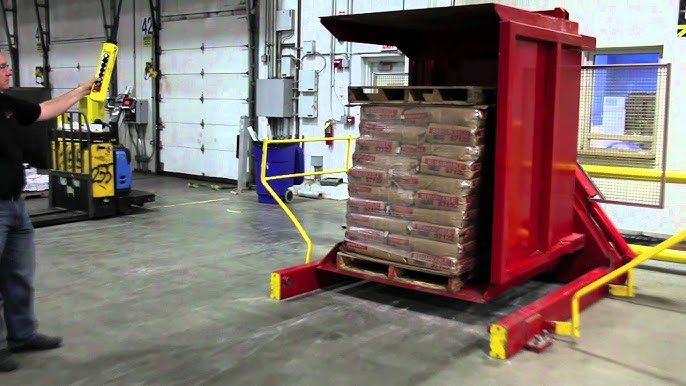
I've walked through countless factories in my career, from when I was a young engineer to now, as the owner of SHJLPACK. I've seen state-of-the-art production lines brought to a standstill by something as simple as a broken wooden pallet. It's a problem many leaders like you face. The solution is often simpler than a complete overhaul. Let's explore how this technology directly translates into more uptime and higher profits for your facility.
How do pallet changers directly impact production uptime?
You have spent years optimizing every gear and process on your main production line. Yet, you still find your team scrambling and your output dropping because of issues at the very end of the process, in the warehouse or loading bay. A shipment is ready, but it's on a wooden pallet and needs to go on a plastic one for export. Or a forklift driver accidentally damages a pallet, and now the entire load is unstable and unsafe to move. This is where your hard-won efficiency bleeds away. A pallet changing machine acts as a dedicated, automated checkpoint, solving these problems before they can stop your operation.
A pallet changer directly impacts uptime by creating a seamless and automated bridge between your production output and your logistics requirements. It eliminates the slow, unpredictable, and risky process of manual pallet swapping. Instead of waiting for workers to manually re-stack goods, the machine can transfer a full load in about a minute. This ensures that the final packaging and shipping stage never becomes the bottleneck that slows down your entire manufacturing process.
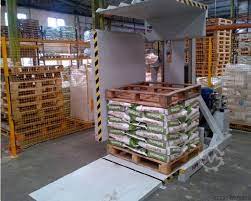
The Bottleneck Effect in Logistics
In a manufacturing plant, everything is connected. A delay in one area creates a domino effect. Think of your production line as a highway. If there's an accident at the very last exit (the shipping department), traffic quickly backs up for miles. This is exactly what happens when you rely on manual pallet handling.
I remember visiting a steel parts manufacturer in the province of Buenos Aires. They had a highly efficient stamping and forming line that produced parts at a steady rhythm. But their loading dock was constantly in chaos. Their domestic clients used one type of pallet, and their international clients required another. Every time they had to switch, two or three workers would have to stop what they were doing and manually move hundreds of heavy steel parts from one pallet to another. This process took 20-30 minutes per pallet. During that time, finished goods would pile up at the end of the production line, eventually forcing the line to stop. The plant manager was focused on the line's speed, but the real problem was downstream.
Manual Handling vs. Automated Changing
The difference between a manual process and an automated one is night and day, not just in speed but in predictability. Predictability is the key to maximizing uptime. When you can count on a process taking the same amount of time, every time, you can plan your production schedule accurately.
| Metric | Manual Pallet Changing | Automated Pallet Changer |
|---|---|---|
| Time per Pallet | 15-30 minutes | 1-2 minutes |
| Labor Requirement | 2-3 workers | 1 operator (part-time) |
| Risk of Injury | High (lifting, repetitive motion) | Very Low |
| Risk of Product Damage | Moderate to High | Very Low |
| Consistency | Low (depends on workers) | High (machine precision) |
| Uptime Impact | Negative (creates bottlenecks) | Positive (eliminates bottlenecks) |
By introducing a pallet changer, you take the most variable, unreliable part of your logistics process and make it a fixed, reliable constant. This single change can unlock the true potential of your production line's capacity.
Can pallet changers integrate with aging production lines?
You look at your factory floor, and you see machines that have been running reliably for 15, maybe even 20 years. They are the backbone of your business. The idea of bringing in new technology is appealing, but the thought of a complex integration project that could disrupt your trusted, older equipment is a serious concern. You worry that adding a new machine will create more problems than it solves, requiring expensive consultants and causing significant downtime for installation.
Yes, modern pallet changers are specifically designed to integrate with aging production lines, often with minimal disruption. Many models function as standalone units. This means they don't need to be digitally connected to your old PLCs or control systems. You can simply place them at the end of your existing conveyor line or in a central warehousing area, creating an independent station for pallet swapping that supports your older equipment without interfering with it.
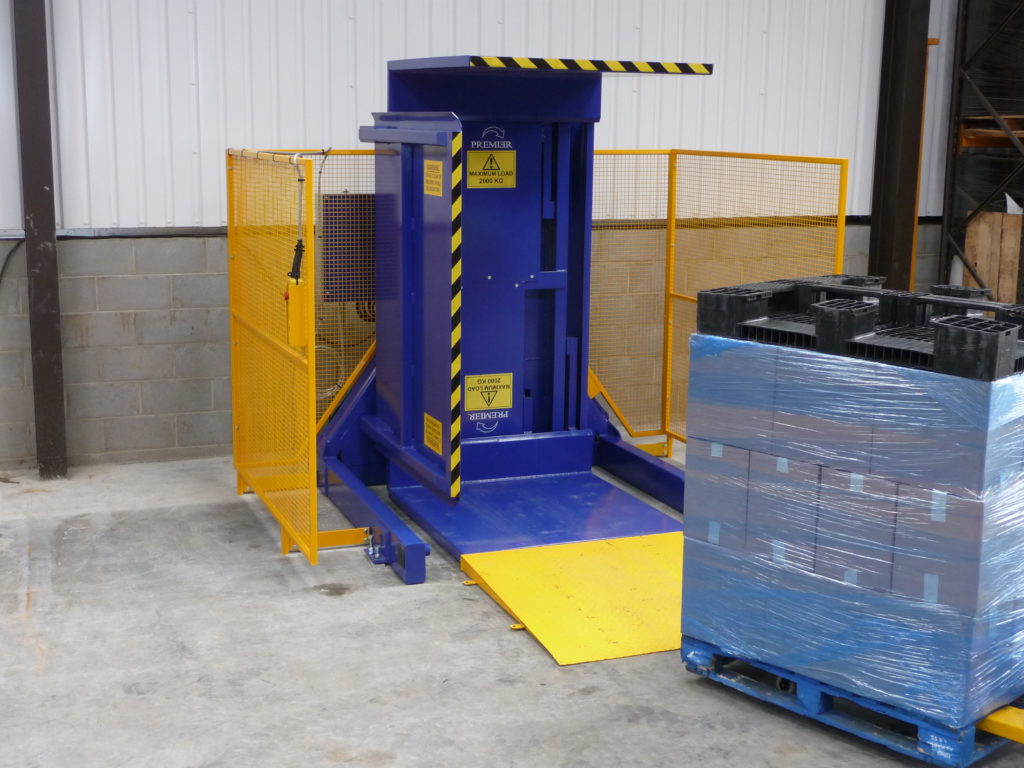
Standalone vs. Fully-Integrated Systems
When I started as an engineer, integrating new equipment was a major project. It required re-writing code, matching complex electrical signals, and days of testing. Today, things are much simpler, especially with equipment like pallet changers. You have two main options.
A standalone system is the easiest way to get started. It operates independently. A forklift driver brings a pallet to the machine, the operator pushes a button, and the machine swaps the pallet. The forklift then takes the newly palletized load away. It requires only electrical power and a level patch of concrete. This approach is perfect for facilities with older lines because it demands zero changes to your existing production control systems. You gain the efficiency of the pallet changer without any of a complex IT project.
A fully-integrated system is more advanced. It is connected directly to your production line with conveyors. When a pallet comes off your line, it is automatically fed into the pallet changer, swapped, and then sent on to a stretch wrapper or loading area. This offers a higher level of automation but requires more planning. However, even this can be done simply. Modern pallet changers can be equipped with simple photo-eye sensors that tell them when a pallet has arrived, making the "handshake" with your old line very straightforward.
Key Considerations for Integration
If you're considering adding a pallet changer, you don't need to be an engineer to make a good decision. Just think through a few practical points. I always walk through this checklist with my clients.
| Factor | What to Check | Why It's Important |
|---|---|---|
| Physical Footprint | Measure the floor space you have available. | You need to ensure the machine and the area for a forklift to maneuver will fit without disrupting walkways or existing lines. |
| Control System | Do you need it to be automated? | If not, a standalone system with simple push-button controls is the most reliable and easiest to install. |
| Conveyor Connection | What is the height of your existing conveyor? | For an integrated system, the new machine's conveyors must match the height of your old ones for a smooth transfer. Most are adjustable. |
| Throughput | How many pallets per hour do you process? | This determines if a simple standalone unit is enough or if you need a faster, in-line model to keep up with production. |
A few years ago, a client with a paper mill in Misiones, Argentina, faced this exact challenge. Their main processing line was over 25 years old but worked perfectly. They needed to switch from in-house wooden pallets to plastic rental pallets to reduce costs, but the manual process was too slow. We installed a standalone 180-degree pallet inverter in their warehouse. The installation took less than a day. It completely solved their bottleneck without ever touching their precious production line.
What is the real ROI of a pallet changing machine in a steel plant?
As a business owner, you scrutinize every major purchase. An investment in new equipment must provide a clear and measurable return. Looking at a pallet changing machine, you might initially classify it as a non-essential "nice-to-have." But this view often overlooks the significant hidden costs associated with not having one. When you start to calculate the money lost to damaged products, the high cost of labor for manual stacking, production delays, and potential worker compensation claims, the financial picture changes dramatically.
The real ROI of a pallet changing machine is found by combining direct cost savings with efficiency gains. It comes from five key areas: eliminating product damage, drastically reducing manual labor needs, preventing costly downtime, lowering the risk of workplace injuries, and enabling faster order fulfillment. When you add up these benefits, the investment often pays for itself in 12 to 24 months, delivering value long after.
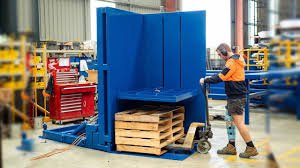
Calculating Your Payback Period
Calculating the return on investment doesn't have to be complicated. You can make a very realistic estimate by looking at your current operational costs. Let's break it down with simple numbers.
Imagine you manually swap 20 pallets per day.
- Labor Cost: It takes 2 workers 20 minutes (.33 hours) per pallet. At an estimated labor cost of $15/hour in Argentina (including benefits), that's: 2 workers $15/hr 0.33 hr/pallet * 20 pallets/day = $198 per day.
- Product Damage: Let's say 1 out of every 50 manually handled pallets results in damaged goods worth $500. Over 20 pallets a day, that's roughly a 40% chance of an incident per day, averaging out to $200 per day in damage costs.
- Downtime Cost: If these delays cause your main line to stop for just 30 minutes a day, and your line's operational cost/value is $1,000/hour, that's another $500 per day in lost production.
Your total daily cost for manual handling is $198 + $200 + $500 = $898 per day.
A pallet changer can reduce these costs by over 90%. That's a saving of around $800 per day. If a reliable machine costs $40,000, your payback period is $40,000 / $800 = 50 working days. This is a simplified example, but it shows how quickly the machine can pay for itself.
Tangible vs. Intangible Returns
The financial calculation is compelling, but the full value goes beyond just the numbers you can put on a spreadsheet. I've seen the impact these machines have on the entire work environment.
| Return Type | Examples and Impact |
|---|---|
| Tangible Savings (Direct ROI) | Reduced Labor: Re-assign workers from heavy lifting to more value-added tasks. Eliminated Product Damage: Gentle, controlled machine handling protects your goods. Lower Pallet Costs: Easily switch to cheaper internal pallets from expensive export ones. Fewer Injury Claims: Removing the primary cause of back and strain injuries lowers insurance premiums. |
| Intangible Benefits (Strategic Value) | Improved Worker Morale: No one enjoys the back-breaking work of re-stacking pallets. Automation improves job quality. Enhanced Company Image: A modern, safe, and efficient facility is impressive to clients and partners. Increased Flexibility: Respond instantly to any customer's pallet requirement without creating a logistical nightmare. Better Safety Record: A safer workplace is a more productive workplace. This is a core responsibility for any leader. |
When you aim to reduce overall operational costs, like your goal of an 8% reduction, you must look at every process. A pallet changer directly attacks waste in labor, materials (damaged goods), and time (downtime), making it a powerful tool for achieving that target.
My Insights: How do I choose the right pallet changer for my facility?
So, you're convinced that a pallet changer could be a smart move for your operation. But when you start to look, you find a market full of different machines: inverters, exchangers, pushers. They all seem to do the same thing, but they work differently. Choosing the wrong one is a costly mistake. You could end up with a machine that is too slow for your needs, can't handle the weight of your product, or simply doesn't fit in your available space.
As an engineer who has spent his life designing, building, and implementing these solutions, I can tell you that the selection process is straightforward if you ask the right questions first. To choose the right pallet changer, you must begin by analyzing four things: your product, your speed requirement, your available space, and your budget. Once you are clear on these points, you can easily match your needs to the main types of machines available.
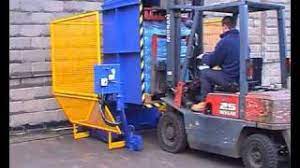
The Three Main Types of Pallet Changers
Let’s simplify the market. Almost all pallet changing machines fall into one of three categories based on how they work.
- Pallet Inverters: These are the workhorses. The machine clamps the top and bottom of the entire palletized load, lifts it, and rotates it 180 degrees. The original pallet is now on top and can be easily removed and replaced. This method is fast, robust, and excellent for stable, durable goods like bags of cement, steel parts, or boxed items.
- Pallet Exchangers (or Squeezers): These are the gentle handlers. The machine clamps the load from the sides, lifts it slightly off the pallet, and then one pallet is slid out while a new one is slid in underneath. This is ideal for fragile or unstable loads like open-top barrels, glass bottles, or delicate electronics because the product is never turned upside down.
- Push-Pull Systems: These are typically used for high-volume, uniform products like bagged goods. A pusher plate pushes the entire layer of product from the old pallet onto a new one. It's very fast but only works for loads that can be smoothly pushed as a single block.
A Decision-Making Checklist
Before you talk to any supplier, go through this list. Your answers will tell you exactly what kind of machine you need. I use this to guide my clients so they don't buy more machine than they need.
| Question to Ask | Why It Matters | My Recommendation |
|---|---|---|
| What is the maximum weight and size of your load? | This is the most critical factor. It determines the required structural strength and motor power of the machine. | For heavy industrial goods like in a steel plant (over 1000 kg), you need a heavy-duty pallet inverter or exchanger. Don't compromise on capacity. |
| How fragile or stable is your product? | This determines the handling method. Turning a load of open-top pails upside down would be a disaster. | If your load is solid and secure (e.g., boxed, shrink-wrapped), a pallet inverter is the most cost-effective. If it's fragile, pressure-sensitive, or unstable, you need a pallet exchanger. |
| How many pallets per hour do you need to change? | This dictates the level of automation and speed. A low-volume need can be met with a simple standalone unit. A high-volume line needs an in-line system. | Be realistic. Don't pay for a machine that can do 60 pallets/hour if your line only produces 10. A simple, reliable standalone machine is often the best start. |
| What is your available floor space and ceiling height? | Machines have different footprints. Inverters need vertical space for rotation. Exchangers need horizontal space for sliding pallets. | Measure your area first. This will immediately eliminate some models and prevent surprises during installation. |
From my personal journey, from working on the factory floor to owning a factory, I've learned that the simplest solution is often the best. For most heavy-duty applications in places like a steel mill or a chemical plant in Argentina, a robust, no-frills pallet inverter is the most reliable and provides the fastest ROI. It’s built for tough environments and does its job day in and day out without complex maintenance. Start there, and only consider more complex systems if your product's fragility absolutely requires it.
Conclusion
Implementing the right pallet changing machine reduces downtime, cuts operational costs, and boosts safety. It is a key strategic investment for any modern industrial facility in Argentina seeking a real competitive edge.





